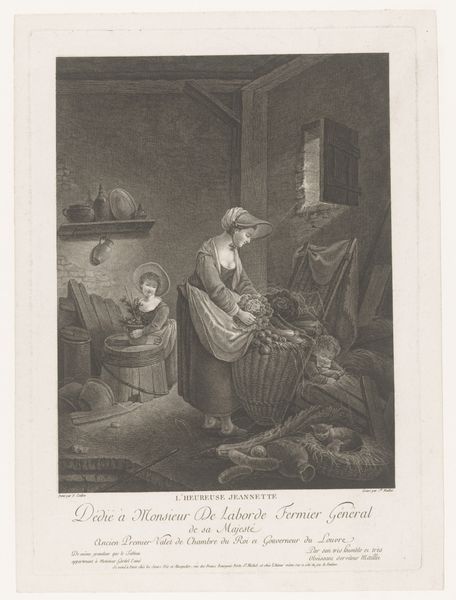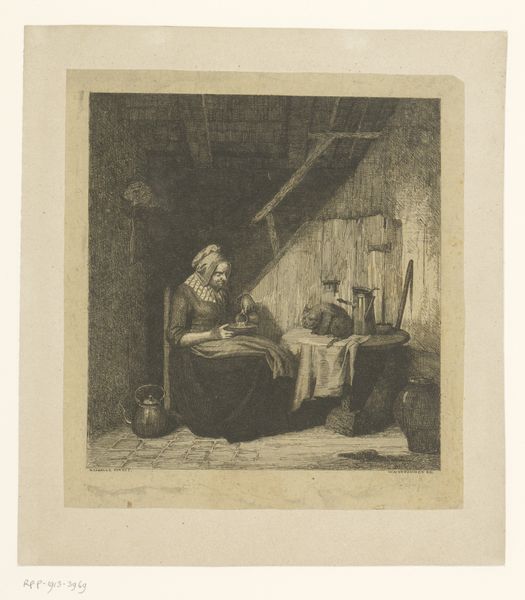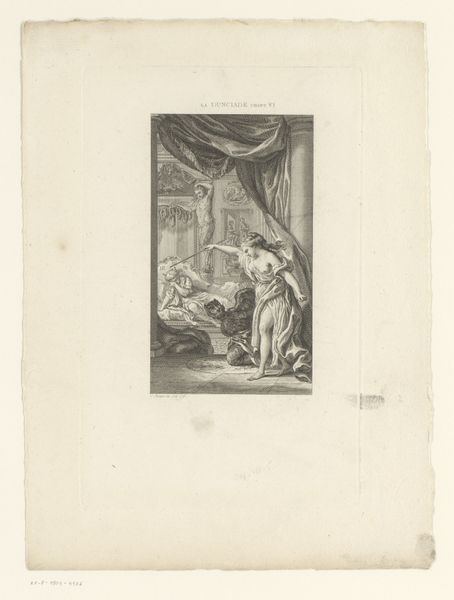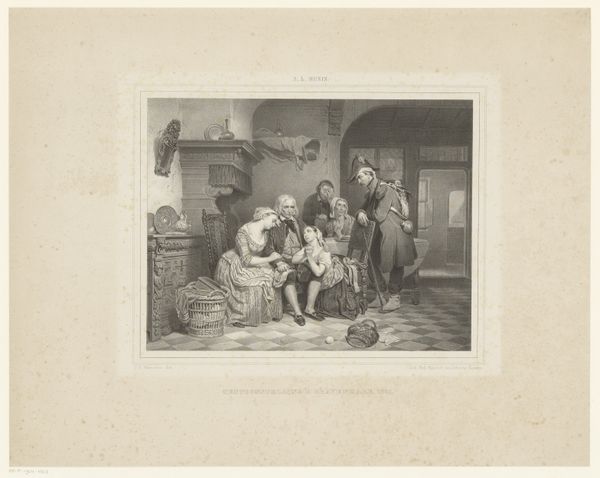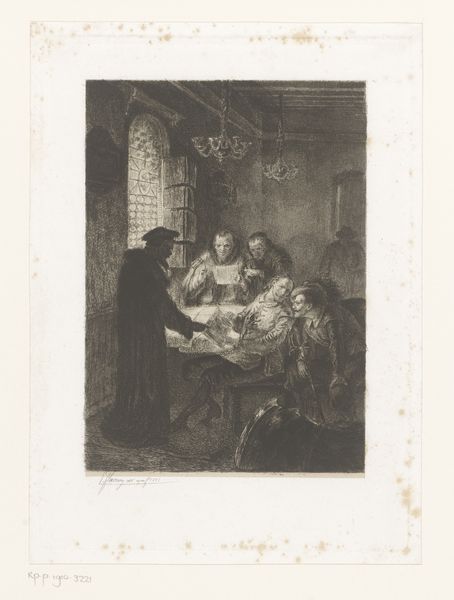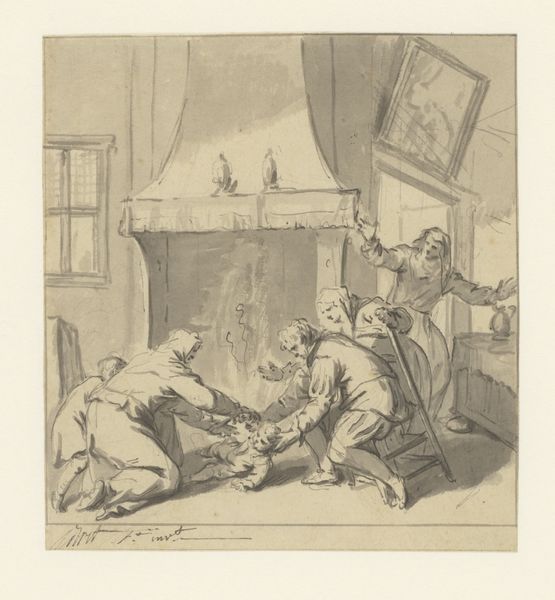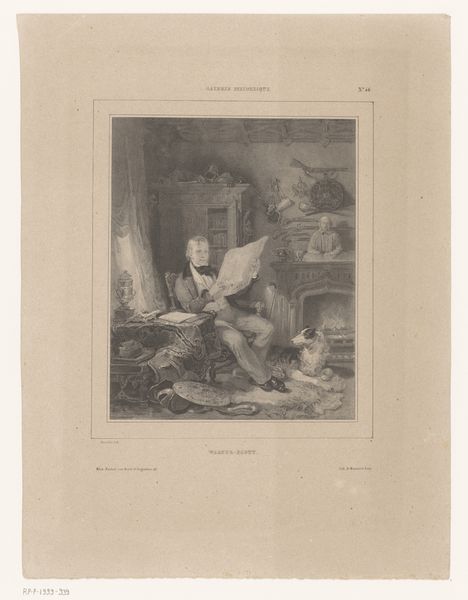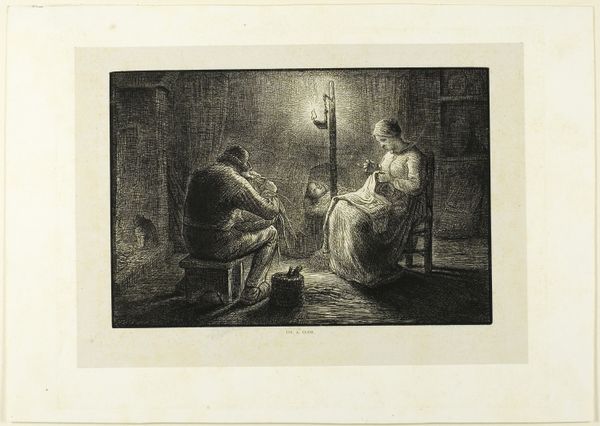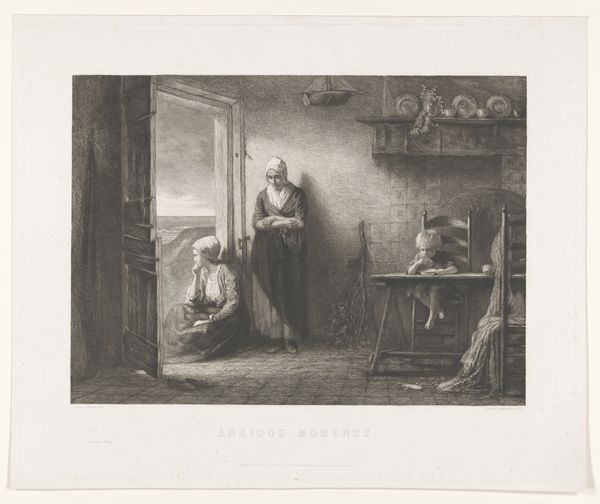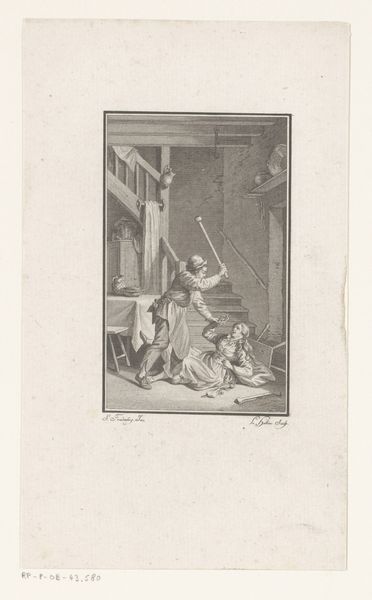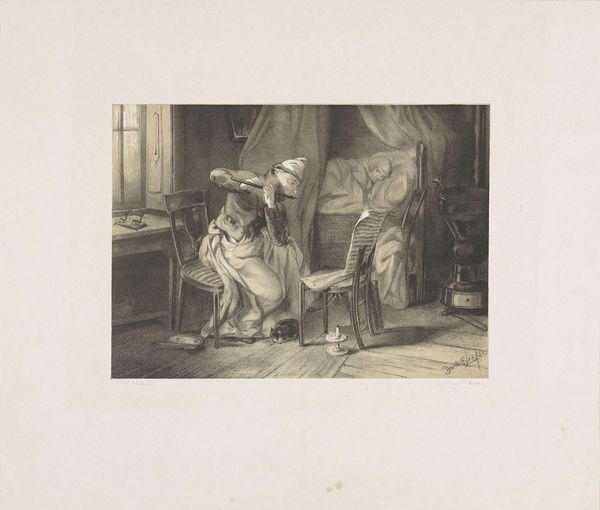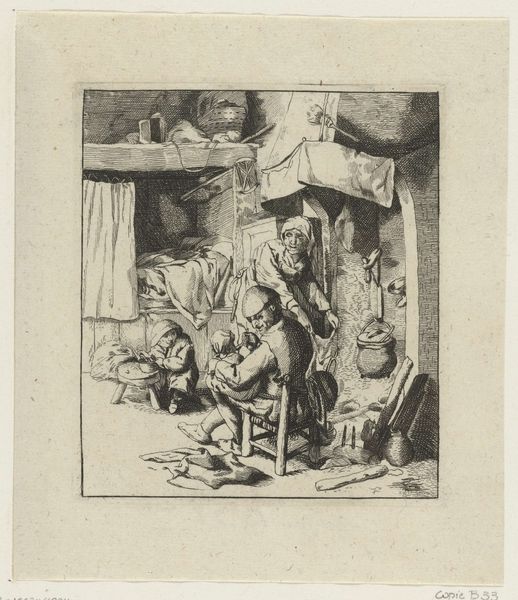
Dimensions: height 386 mm, width 276 mm
Copyright: Rijks Museum: Open Domain
Curator: Looking at this print, I immediately think of quiet, intimate labor. The muted tones and detailed lines create such a domestic scene, don't you think? Editor: I do. This engraving, titled "Twee dienstmeiden in een kippenhok"—or "Two Maids in a Chicken Coop"—offers a compelling glimpse into 18th-century life. Though the piece is attributed to Joseph C. Maillet and dated from around 1761 to 1811, the inscription names it ‘La Fille a Simonette,’ a dedication piece. It feels particularly pointed as it makes explicit the power dynamic and economic realities faced by those working in service. Curator: The medium itself, engraving, is significant. The precision and detail inherent in the process emphasize the work and skill needed to create such an image. The labor of the engraver mirrors the labor of the maids depicted, almost. Notice the careful cross-hatching creating the shadows and textures. Editor: Precisely. There's also an interesting gendered aspect at play. By focusing on female labor, the artwork might subtly critique the societal expectations placed upon women during that time. Note too how even within this presumably domestic setting, one notices other faces and people contained in the scene and coop. Curator: I see what you mean. One does tend to analyze the work they are performing and their material relationship to these tools that create products in such labor. Are they sorting the eggs, cleaning, something else, I wonder? Editor: Exactly. It asks us to reflect on the representation of labor—and who it’s "dedicated" to by comparison—especially from the perspectives of the historically marginalized. Perhaps thinking of these types of dedications less as 'appreciations' and more like... advertising that could generate future commissions. Curator: The contrast of darkness to highlight creates such depth in what could have been such a flat subject. The engraving seems almost three-dimensional because of that layering. Editor: And through these layers, it tells a broader story of labor, class, and the artistic practice itself. It invites us to reconsider the unsung contributions of all sorts of women from such periods. Curator: Indeed, and a compelling demonstration of technique too, as much of labor- or any dedicated work- always is. Editor: An intersectional approach, I feel, that challenges the artwork's original aristocratic consumption in an attempt to appreciate overlooked class stratifications from such periods of history.
Comments
No comments
Be the first to comment and join the conversation on the ultimate creative platform.
